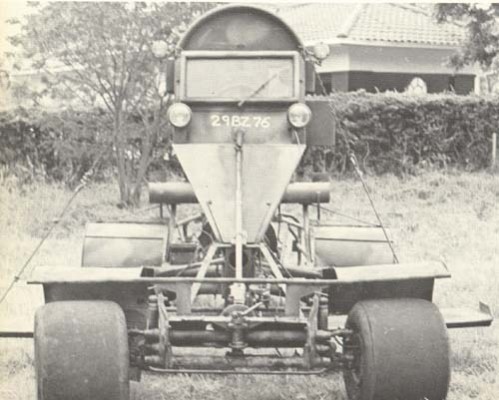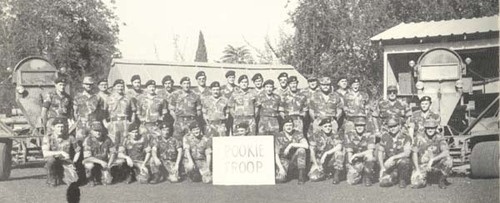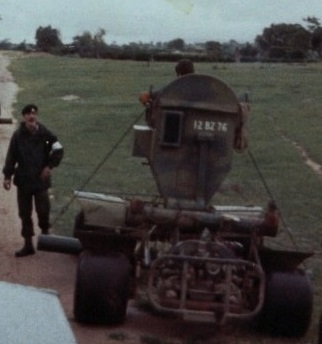Rhodesia was a former British colony in the south of Africa and has gone on to become Zimbabwe, but following its declaration of independence, there was a brutal civil war dubbed The Rhodesian Bush Wars. One of the terrifying aspects of the conflict was the extensive and calculated use of land mines along huge stretches of road with the effect of paralyzing supply and trade routes. Hunting for the mines one-by-one was too dangerous and required a huge amount of manpower, so a solution had to be developed and the result was the Pookie.

Like many great inventions or technical advances, the unique Pookie was the product of desperate circumstances. Designed, tooled and rigged by a remarkable Rhodesian automotive engineer, Ernest Konschel, the Pookie evolved in November 1976 at a moment when Rhodesia was facing the greatest crisis in her eleven years of ‘illegal’ independence since 1965.
Created to deal with the constant mining of the roadways during the Rhodesian Bush War, the Pookie was a small one-person vehicle named after the bush baby and fitted with large Formula One tires bought second hand after the South African Grand Prix. The wide tyres prevented the detonation of buried mines by exerting less ground pressure than a human footprint and spanning the mines’ circumference.

The vehicle was made with readily-available parts from the Volkswagen Kombi and resembles a small go-cart with an elevated cab. The capsule was designed to protect the operator/driver from small arms fire in ambushes, as well as from the blast of an exploding land mine. The bottom of the cab had a V-shaped reinforced hull to deflect the blast away from the operator. Sensor ‘pans’, resembling rectangular wings, were lowered and used perpendicular to the ground below the cab. When the vehicle was transported, the pans were raised at a 45-degree angle.
The design was simple: keep the vehicle as light as possible so it can roll over and detect mines.

This design allowed the Pookie to detect mines while moving at speeds of up to 50 kilometres per hour ahead of convoys. By keeping ahead of the convoys at these speeds, the crew traveling in the Pookie could exit the vehicle and remove or detonate the land mine far ahead of the convoys, ensuring that the convoys could continue moving at a safe distance and efficient pace. When a mine was detected, the vehicle stopped and the mine was removed and neutralized.

When tested in front of the Army and the Police commanders, the Pookie was driven over a TM-46 land mine without depressing the detonator. Seeking a ground pressure of less than five pounds per square inch, Konschel had achieved three pounds pressure, less than that of the human foot, through his wide soft tyres and the trailing arm suspension of the Kombi.
Between 1976 and 1980, sixty-eight vehicles were built and 12 were damaged in ambushes by command-detonated landmines or rockets. Only one driver was killed, by a rocket through the armoured windscreen.

At a time when the average cost of a repair to a land mined vehicle, in parts alone, was R$17, 000, Konschel produced the Pookie for R$11, 000. This meant that a Pookie only had to find and neutralise one land mine to pay for itself. The Pookies were a huge success. In four years of service, the Pookie found and cleared an estimated 550 land mines with no accidental detonations.
Photos: jalopnik
